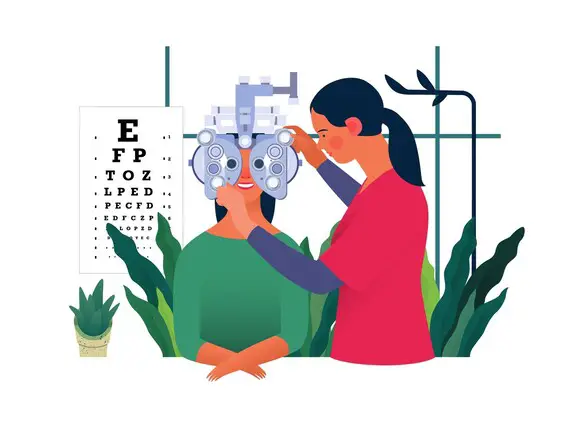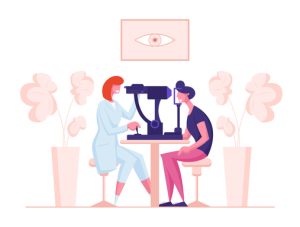A-Z Part 4 Optom Guide
Disclaimer: the following are my experiences and may not accurately represent yours.
I’ve heard from many past students that they consider part 4 the most challenging year in all of optometry because of all the assessments and research, but I personally didn’t find it that bad. Part 4 is very well run by fantastic supervisors and lecturers. You should be fine if you manage your time and stay on top of your 783 research. Remember to make the most of your second to last year in optometry. Time passes faster than you think! I remember entering part 4 thinking I still had a lot of time in optom, but this year passed in a flash. I say this in every guide: join club events and do what you always wanted to do.
TLDR:
- Get a locker to store your equipment and other stuff. Lockers are a lifesaver; I kept all my optom equipment in my locker this year. Everyone looks at me crazy after knowing I store my equipment there because apparently belongings have been stolen before. Do this at your own risk!
- Try to do well in the small assignments and reflections (not like me), as the marks quickly add up.
- Don’t procrastinate on your 783 experiments and report. Good communication between group members and supervisors is vital to a successful project.
- Make the most of your clinic sessions, and practice on your observer if you have no patient.
Optom 416
Optom 416 combines everything you’ve learned, and a large part of this course involves case analysis. You will be given two cases, one with 6 minutes to prepare before you present to the class and one given one week in advance. I really liked these cases because they were good opportunities to learn about different management plans, especially those involving binocular vision. There will be multiple case analysis presentation sessions throughout the year, so attend every session if you can.
Labs start off immediately with 8 am sessions. You will have many 8ams throughout part 4, but you will slowly get used to it. It takes me an hour to commute to uni, so waking up at 6 am is the norm. Assessments and hurdles also start fairly quickly, and you will be expected to perform seemingly impossible tasks such as prelims in 8 minutes, anterior health, tono and gonio, all in 15 mins. These assessments will be initially difficult, but you will all pass even if it takes a few resits. It’s okay to fail hurdles; you will be given plenty of practice and opportunities to pass. Hurdles will be graded as a pass/fail, but you will be marked on your reflection of your performance in a separate write-up. You are graded on how accurately you judge your performance and your action plan for improvement. My advice is don’t be too harsh on yourself, as you will be marked down for pointing out mistakes the marker didn’t see you make. Ironically, you can pass all your hurdles on the first go and still do terribly on reflections which actually contribute to your final grade. The format of reflections is planned to change in 2024.
General tips:
- Do case analysis and past papers with classmates for exam revision.
- Don’t be shy about asking for help with your case analysis presentations; some cases are difficult. I couldn’t have done mine without help from my peers!
- Be on time and prepared for clinic! You have limited clinic sessions to perform full eye exams on actual patients (or part 2s). This is a great learning opportunity.
- A lot of part 4s buy the black lunch bag from Kmart to carry their BIO and other equipment. Strongly recommended.
Optom 430
This is the contact lens course, and most of you have little experience or past exposure to contact lenses. You will learn about different types of contact lenses and how to fit them. The lecture content is less intensive compared to other papers, such as optom 450. There are contact lens calculations throughout this course, and they can be confusing at first. Through practice, these calculations won’t be hard at all.
430 labs will give you hands-on experience fitting different hard and soft contact lenses. These sessions are chill, but do your best to practise because there are two lab tests where you will insert, remove and assess the fitting of RGP and soft contact lenses. You will also learn how to insert and remove contact lenses on yourself, which sounds difficult if you have sensitive eyes. I have very sensitive eyes, but I still managed to do it. The more you insert and remove lenses in your eyes, the less sensitive they become.
General tips:
- Start revising early. I found the past exam papers difficult so don’t underestimate this course! (Exams account for 55% of total grade)
- Learn the contact lens solutions. You might think this is a trivial part of the course, but that’s not the case. Questions about contact lens solutions and materials caught many of us off guard in the mid-seme test.
Optom 442
Optom 442 comprises of low vision, paediatrics + geriatrics, and binocular vision. In low vision, you will learn different methods of improving the lives of patients with poor vision. At first, low vision refraction can be confusing, but there are plenty of resources on Kuracloud, so remember to access them after lectures and labs. Fill in your physical copy of the lab guide and make good notes because you can bring your lab guide to the low vision lab test.
Binocular vision is the section most people find difficult as there is a lot to remember. It’s tempting to slack in 442 lab sessions, but try not to because the content is examined in the practical lab test. Revising for BV can be tedious, but you don’t want to neglect it. There are also a lot of BV cases in 416 case analysis, so once you get the hang of the main concepts, it can be pretty straightforward.
There is some overlap from 450 in paediatrics and geriatrics. Comparatively, these sections are not as tricky. You just have to remember the main concepts, and the exam questions in this section are fairly predictable. You should know the methods of paediatric tests such as Mohindra retinoscopy, red reflex tests and communication techniques with elderly patients.
General tips:
- You need to know the different vision training and pass tests for your lab test. This will be useful in your final exam.
- Refer back to 316 for BV, such as the formula for the AC/A ratio. This is not given in 442.
- Past exam papers may not be a good predictor of the questions asked. The exam questions in 2023 were very different to past exams!
- Don’t forget to write notes for the low-vision movie and the delivering bad news lab. Many students forgot to write notes for those labs, and the question came up in the lab test!
Optom 450
Optom 450 is all about diseases. You will learn how to diagnose diseases and manage them. The lectures are an extension of optom 353, with a greater focus on disease management. The lectures will assume you know most of the content from optom 353, so you may need to refer back to those notes. I made a table of general and glaucoma drugs in part 3, and I found this very useful in part 4. There is a lot of overlap between the content in 353 and 450, you can add to your 353 notes instead of making new notes for 450!
There were only a few 450 labs, mainly group case analyses. There are two assignments, one for OCT and one for Glaucoma which are marked and graded. You will have months to do these assignments, and most people do well. The hardest part of these assignments will be case analysis and management. I recommend working with others in your assigned case to discuss.
General tips:
- Revise the most important and common diseases for your tests and exams. Some lectures have 100 slides, but not all information is tested. Don’t panic!
- Learn the differential diagnosis and accompanying symptoms and tests. Red-eye questions come up every year in the exam.
- Many questions ask you about the management of diseases and medications. You should know the names of drugs, concentrations, uses, and review periods.
Optom 783
Optom 783 is a research project in which you will write a 10k-word research paper. Ten thousand words might sound like a lot, but trust me, a lot of people had to cut down the word count. The literature review should be around 5000 words long, and the rest of the word count will include methods, results, and discussion. You might see many 5-6pm sessions allocated to 783 in your timetable, but you can dismiss them all. How often you meet with your supervisor is dependent on your project. I had an easy time with this paper because my group organised and pushed for meetings, data collection and analysis with our supervisor. Supervisors are busy and might not have time to follow up on you, so remember to take the initiative to meet with them and ask for guidance. I recommend sending your supervisors sections of your report for feedback before you submit.
General tips:
- Write bits and pieces of your report throughout the year.
- Make sure your reference style is consistent. I prefer APA over Vancouver because it’s a PAIN keeping track of the numbers.
- Some students used referencing software plugins. I found them all difficult to use, but don’t be discouraged from trying them out!
- As I said before, try not to procrastinate and leave your report to the last minute, 10k words is very stressful to cram.
Part 4.5
Part 4’s don’t have a full holiday, and you will spend 5 weeks in Grafton clinic for binocular vision, paediatrics, dry eye, contact lens fitting and performing full eye exams. Stream one starts days after the final exam, and there’s no break, but you can get it out of the way. Students in stream two will have to return after New Year’s, but they can better retain knowledge for part 5 and have a break after exams.
At first, performing an eye exam can be daunting, but you will improve with practice. I recommend practising and getting good at small talk and building rapport with your patients. Your supervisors will be there to guide you and help whenever you need, so there’s no need to worry.
Externships (part 5)
At the end of the year, you will be picking streams for your externships. Externs will run for 6 consecutive weeks, 3 weeks in each practice. You can choose to go to corporate or independent practices across Australia and New Zealand. You can go in stream one (late April to June) or stream 2 (June to July). There are benefits to both streams, and it’s up to you to decide. Most students want stream one, so be quick when streaming opens! At the end of the day, it doesn’t really matter when you go for externships.
Benefits of stream one:
- You can learn how to speed up and streamline eye tests earlier in the year and apply them in clinic.
Benefits of stream two:
- You will be more comfortable and confident to perform full eye exams during your externship because you will have more practice beforehand.



